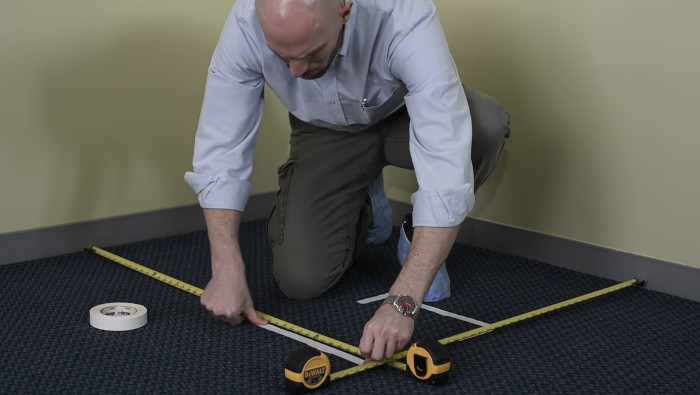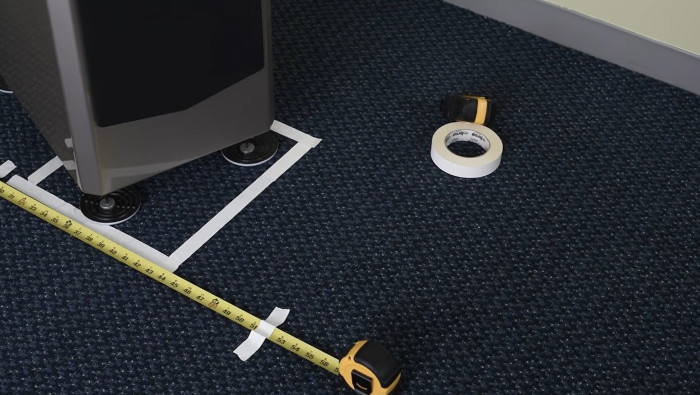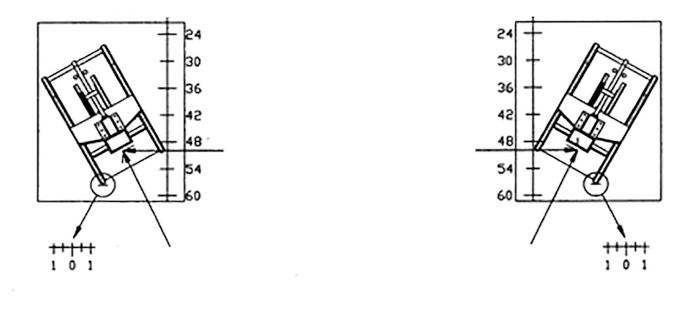WILSON AUDIO W.A.S.P.
Placing loudspeakers in a room is always the most challenging part of any audio setup. No matter whether your room is small or large, inevitably many room-related issues arise. Some of them can be handled by proper acoustic treatment, some not, as they are determined by the room dimensions and wall ratios, as well as by building materials. It is always a compromise. Like it or not, the loudspeakers are the only component that generates the sound and interacts with the room. And there is only one component receiving the sound - the pair of your ears. So, the placement of the speakers and your ears in the room is the most critical part of any setup procedure.

Although it is a dynamic process with many variables, these three scenarios usually apply:
- The speakers position and the listening position are fixed. If the room does not allow you to move the speakers or yourself more than few centimetres, that’s all that you have and subtle shifts, toe-in, and/or tilt will help you optimize the top end with a bit of midrange, as well as the focus of the soundstage.
- One position is fixed, the other can be changed. Typically, the listening sofa is fixed, but you can move the speakers freely around the room. Or vice versa. This opens much more interesting universe of options, as you will be able to place yourself or the speakers in the preferred modal area of the room.
- None of the positions is fixed, you can do what you want. Getting most of the room may be quite a lengthy process, and a very dynamic too. Setting up the speakers right (like in the Wilson Audio’s W.A.S.P. procedure) the sound is optimized for your current listening position. What if you move your sofa half a meter farther from the speakers? Then the procedure must be repeated from scratch. To settle on the final and the best placement requires a lot of listening and process iterations, and it can take weeks, for what sounds great on Monday, may get nuisant by Friday.
That said, this article won’t try to provide complete guidelines as variables are too many and listening preferences too. However, I find the Wilson Audio W.A.S.P. procedure a very good one, mainly because it relies on ears, not on calculations or mathematical formulas. This way, your own listening preferences become the #1 parameter in order of importance. How does it work in real life.
Zone of Neutrality
During the years of setting up their loudspeakers Wilson Audio technicians realized that the distance of the side wall and the wall behind the speakers are the most critical. Well, this is a common knowledge, you may say, and you’ll be right. However, they also say that the right spot for the speakers is rather sharply delineated in relation to the walls. They call it a Zone of Neutrality.
To start the W.A.S.P. procedure, it is recommended to stand up with your back pressed to the front wall and use your own voice and your own ears to judge the ‘neutrality’. While talking, as you slowly progress away to the room, you should be able to perceive the tonal and spatial transformation from the initial bass reinforcement (caused by the proximity of the wall), through the rather artificial largeness of the image at a certain point, to the spot where your voice starts sounding natural, with the right tonal balance and the right spatiality, as if talking outdoors with no walls around. From this spot, if you continue moving slowly to the room, it takes about 20-40 centimetres before you start hearing the room interaction again. That’s where you step back and mark the two boundaries of the Zone of Neutrality on the floor. In the next step, the same procedure is repeated by moving from the side wall across the room, in the corridor/zone that you have marked in the previous step. Once again, the zone of the best sound (of your voice) is marked on the floor. By now, there is a rectangular spot where the loudspeaker should be placed. Wilson Audio says that although this position may not be the final one and some fine tuning will be needed, it certainly is close.


Zoning the speakers
Within the rectangular spot (one for each side), the speaker should be placed so that its baffle is in two thirds of it, measured from the wall behind it. As speakers are diagonally placed (pointed to the listener), you should experiment to which corner of the baffle the 2/3 rule should be applied. No need to say that the perfect symmetry of the listening triangle should be maintained.
The rest is an iterative process of listening, evaluating the sound, and moving the speakers in small increments for the best sound. It is important to play a good representative piece of music, that allows judging every single attribute of the sound. Late David Wilson recommended track Pillow from fLIM and the BB’s New Pants jazz album (Warner Bros). Wilson Audio’s evaluation sheet includes the following seven criteria: low bass extension, upper bass quality, soundstage centre focus, soundstage bloom, harmonic balance, sense of dynamics, and flow. Each position within the Zone of Neutrality should be graded in each criterium. A simple grading system (like school grades) would work.

It is not surprising that the ultimate goal of the W.A.S.P. procedure is not to achieve an even frequency response; achieving the evenness of musical performance is what you should care about. The difference between great and the best can be as small as a 5mm, so take time to do it properly. As simple as it can be, this procedure leads to very good results. Although you may object that human’s voice does not cover the complete area between 20Hz and 20kHz, it covers the area that is the most important to anyone. If voices are not right, nothing is.
W.A.S.P. YouTube video
Other recommended reading: Do not listen to your room – listen to music
(C) Audiodrom 2023



